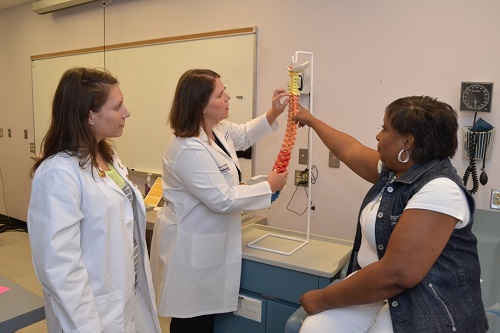Preceptor Preparation Online Course - Advanced
Mozilla Firefox preferred browser
Essential Competencies of Preceptors: A Focus on Working with APRN Students
Module 6: Communication and Conflict Resolution
Elements of Effective Feedback Conversations

Match the Conversation Style to the Purpose
When most people hear “feedback”, they think about the type of communication that involves a one-directional flow of information from the preceptor to the student pertaining to his or her performance and ways to improve. Often times, this feedback is called action-oriented feedback. Although most commonly thought of, it is not the only form of feedback. Another type of feedback conversation focuses on the thinking, mental models, and complex decision-making processes (called frames) that drive individuals to act or respond in a certain way. Frame-oriented feedback is provided in the context of a reflective, reciprocal dialogue between preceptor and student where the preceptor seeks to uncover the thinking that led to the behavior or performance at hand. It is important for the preceptor use a feedback approach that aligns with the purpose of the conversation.
Action-oriented feedback conversations are appropriate for situations where the thinking (the “why”) behind what they did is irrelevant to improving the behavior. What matters is the behavior change in future practice.
Example: a student uses Form X instead of Form Y to complete a referral.
In order for the student to use the correct form in the future, is it essential to understand what the student was thinking when he or she chose Form X? Probably not. What is important is that the student is informed of the expectation to use Form Y and not Form X for any future referrals of that nature.
Frame-oriented feedback conversations seek to understand the "why" behind actions. Seeking to uncover the thinking and the "why" takes time, effort, and skill, but it is extremely important to ensure the preceptor provides targeted teaching and coaching to the student.
Example: A student does not list 'possible MI' in the list of differential diagnosis on a patient presenting with new onset chest tightness.
In order for the student to develop clinical reasoning and judgment skills, it is essential for the preceptor to understand the thinking that led the student to miss a critical differential diagnosis. Understanding where the student went wrong in his or her thinking allows the preceptor to "meet the student" where he or she is and develop more sound and reliable thinking patterns.
For purposes of this module, frame-oriented feedback will be referred to as reflective feedback conversations.
| Clinical Performance | Purpose of Conversation | Type of Feedback Conversation |
|---|---|---|
| Student does not document the H&P according to standard format | Understanding the thinking that led the student to use the incorrect format is not essential for using the correct H&P format in the future. | Action-oriented feedback conversation |
| Student assesses a patient with CHF exacerbation and wants to order 1L Normal Saline bolus. | Understanding the thinking that led to the decision for a fluid bolus is important in order for the preceptor to help the student develop more sound clinical decision making and judgment. | Frame-oriented feedback conversation |
| Student identifies an incorrect treatment approach for the diagnosis. | Understanding the thinking that led to the treatment decision is important in order for the preceptor to help the student develop more sound clinical decision making and judgment. | Frame-oriented feedback conversation |
| Student uses the incorrect billing code for a patient diagnosis. | Understanding the thinking that led the student to use the incorrect billing code is not essential for using the correct billing code in the future. | Action-oriented feedback conversation |
Resource:
Download the attached document for elements of high quality reflective feedback conversations Resource for Elements of High Quality Feedback Conversations
This website is maintained by the University of Maryland School of Nursing (UMSON) Office of Learning Technologies. The UMSON logo and all other contents of this website are the sole property of UMSON and may not be used for any purpose without prior written consent. Links to other websites do not constitute or imply an endorsement of those sites, their content, or their products and services. Please send comments, corrections, and link improvements to [email protected].